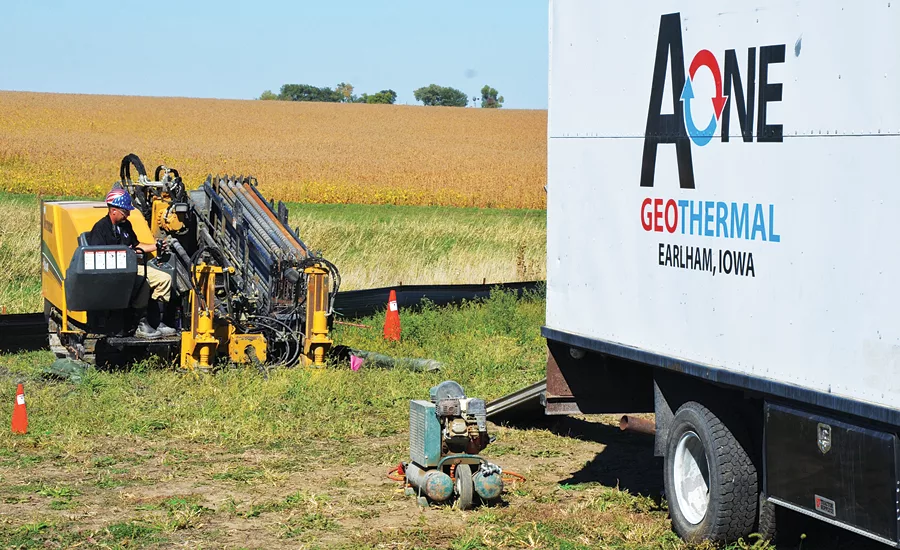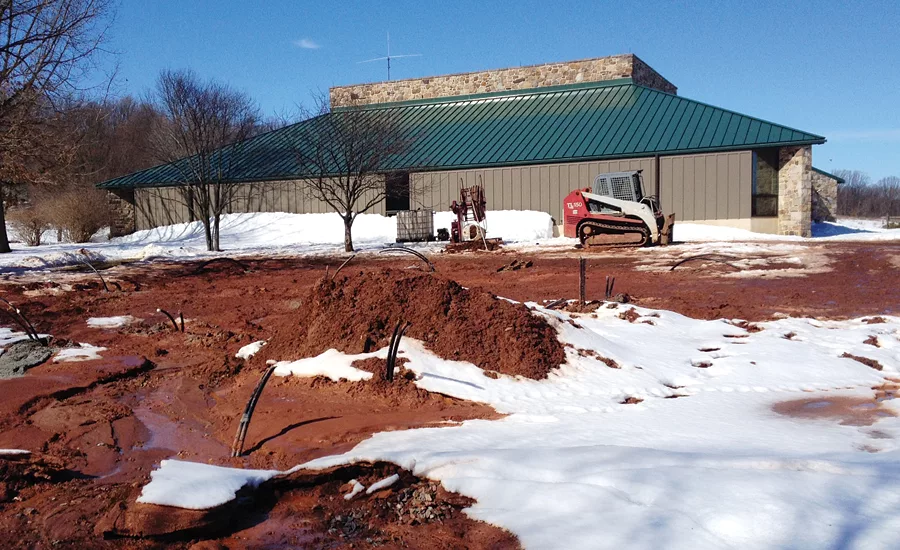The rise of cost-effective geothermal systems
Geothermal heat pump systems have been growing in use since first being deployed successfully in the 1970s.


Since the first caveman built a fire inside to warm his living space, humans have been harnessing the power of Mother Nature to heat and cool a home. Now, geothermal energy, a modern technology that uses the earth’s thermal properties in conjunction with electricity, is poised to become more widespread as an eco-friendly way to maintain comfortable indoor temperatures.
Geothermal heat pump systems have been growing in use since first being deployed successfully in the 1970s, and their popularity shows no signs of slowing down: A 2013 global analysis by Navigant Research predicts the geothermal market will grow by more than 150% by 2020.
And for good reason. Geothermal energy is a renewable resource that is a solid alternative to conventional energy sources. An Idaho National Laboratory 2006 report, titled “The Future of Geothermal Energy,” states that “many attributes of geothermal energy, namely its widespread distribution, base-load dispatchability without storage, small footprint and low emissions, are desirable for reaching a sustainable energy future for the United States.” Download the report at https://inldigitallibrary.inl.gov/sti/3589644.pdf.
The technology reduces greenhouse gas emissions by as much as 40% more than traditional HVAC systems, according to the U.S. Environmental Protection Agency, and offers considerable water savings potential. By replacing cooling towers with geothermal heat pumps, building owners can conserve potable water that is otherwise evaporated into the air during a cooling cycle or used to blow down the system to clean away mineral buildup. The systems can save 30% to 50% in heating and cooling costs as well, making it good for the wallet as well as the planet.
Adding another technology to the standard playbook for heating and cooling can help create a more energy-secure future. The INL report states, “Expanding our energy supply portfolio to include more indigenous and renewable resources is a sound approach that will increase energy security … Geothermal energy provides a robust, long-lasting option with attributes that would complement other important contributions from clean coal, nuclear, solar, wind, hydropower and biomass.”
The technology can be retrofitted as well as incorporated into new construction. The recently built LEED Gold Lady Bird Johnson Middle School in Irving, Texas, installed geothermal water-source heat pumps as well as solar panels, LED lighting and wind turbines and uses 70% less energy per year than other middle schools in Texas. New mixed-use development Brickell City Centre in Miami installed the pumps in its 820 residential condo units to significantly lower water, sewer and energy costs.
The upfront cost factor
But if geothermal has so many positive attributes, why aren’t more contractors installing it?
The problem lies with the upfront costs. The massive system requires installing a ground-loop heat exchanger, a complex web of piping that snakes hundreds of feet beneath the ground to heat and cool the water in the geothermal system. Installing the ground-loop heat exchanger can represent as much as 60% of the total cost of the system, making it a difficult check for a homeowner to write.
To eliminate this barrier, three new kinds of partnerships have emerged to give more options for widespread adoption of geothermal technology. Contractors can now partner with utility providers, third parties or both, opening the door for cost-effective ways to install this energy-efficient, environmentally sensitive heating and cooling system.
- Utility-owned geothermal loops. This type of partnership allows a third-party utility to install the loop system and lease it back to the end user. In this scenario, the geothermal contract to use the utility remains tied to the property, which is billed as a line item on the end user’s monthly bill, just as if the utility provider were billing the property for traditional heating resources such as natural gas.
This has benefits for both the utility and the customer; it is considered a “rate recoverable” long-term asset to the utility, while the customer has a system delivering proven comfort from a distributed energy resource.
An example of this model at work is the Western Farmers Electric Cooperative (www.wfec.com) in Oklahoma. A Geo Validation Program implemented geothermal heat pumps in residential homes and received positive results. Peak demand for the HVAC systems in participating homes dropped by 39% and the program was able to generate a 32 kW “virtual” peaking power plant, which was obtained at about one-third the cost of new generation.
- Third-party-owned geothermal loops. This partnership is similar to a power purchase agreement with a utility provider, but instead, the third party begins a thermal power purchase agreement and enters into a long-term contract (from 20 to 25 years) to own and operate the geothermal system. This third-party provider forms a special purpose entity that owns the energy-producing asset and essentially becomes a mini utility selling energy to the end user at a specific rate.
An example of the utility approach to geothermal installations is the Plumas-Sierra Rural Electric Cooperative in Portola, Calif., which offers a program of 15-year nontransferable, interest-free loans for geothermal heat pump installations. Plumas-Sierra estimates a consumer will save $2,000 in annual heating energy costs using geothermal vs. propane.
Orca Energy launched a third-party utility loop program for developers, homebuilders and new home buyers. Orca bills a monthly utility charge designed to be set at or below traditional space heating/cooling and hot water energy costs. This provides the end user with predictable energy costs over time without having to pay for the upfront cost of installing a ground loop.
EcoSmart Solutions develops and implements alternative energy structure programs in large-scale real estate projects. It locks in lower costs for energy by employing ground-source geothermal technology for heating and cooling the home, together with solar energy generation, to achieve net-zero energy use. In Austin, Texas, the Whisper Valley Community is working with ESS in a new 7,500-home master-planned net-zero community to be equipped with geothermal heat pumps, hot water systems and Energy Star appliances.
The homeowners incur no upfront costs for the geothermal system, as the ground loop infrastructure is pre-installed through the community. Homeowners enjoy peace of mind with an extended warranty and no maintenance costs for the first three years. Energy costs in a Whisper Valley home will be fixed at approximately $175 a month.
- Third-party-owned loops with utility participation. This hybrid partnership is similar to both the utility and third-party-owned models, but in this instance, the utility collects the energy payment rather than the third party. The utility takes a small percentage of the profits from the third party and gives the end user some added security.
In all three of these partnership scenarios, a geothermal unit has two main benefits. First, the renewable energy aspect allows the utility or third party to use business investment tax credits and other federal incentives, further driving down the cost of installation. Second, because the technology is more energy-efficient, end users can expect a much lower utility bill.
As contractors learn more about the cost-effective options available for geothermal heat installation, use of this eco-friendly technology will continue to grow, giving homeowners new choices for sustainable heating and cooling systems that also save them money. These ground-loop service provider concepts can help offset the upfront investment and allow more contractors to install geothermal systems, creating energy security and reducing greenhouse gas emissions.
Looking for a reprint of this article?
From high-res PDFs to custom plaques, order your copy today!





